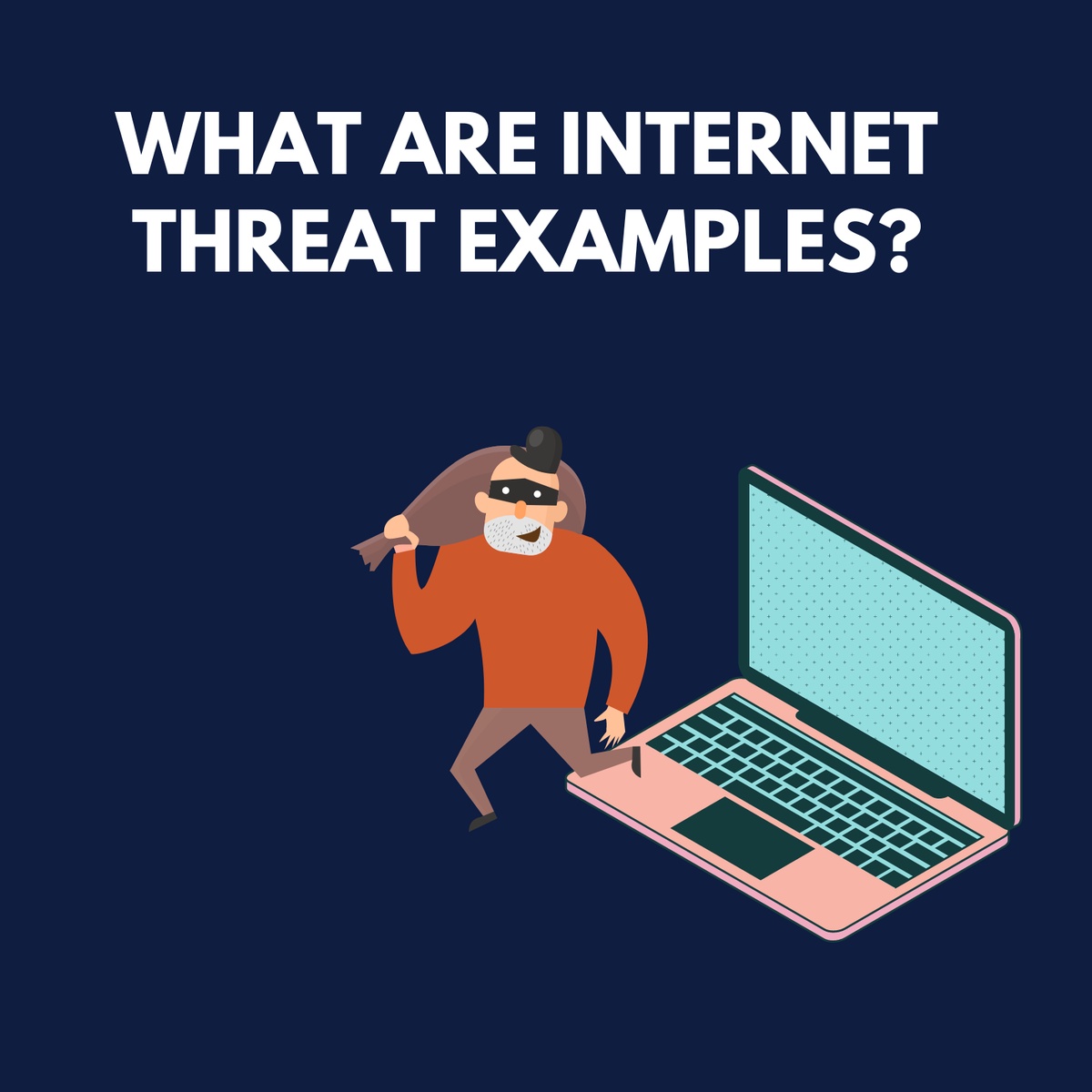Securing the boundaries of your digital premises from any successful cyberattack now becomes a challenging task. These days, the cybercriminal has an unprecedented potential to ruin the entire infrastructure of security with just one malicious attack. Moreover, there are several internet threats examples that are getting popular for victimizing businesses and professionals.
Hackers nowadays are not limited to targeting login details. However, the reason is more i.e. confidential data, card details, transaction records, and even damaging the complete mechanism. For the same, these anonymous actors constantly intervene to gain unwanted access to the data.
As the sphere of IoT-connected devices is widespread, similarly, the arena of vulnerabilities of also mounting the vulnerabilities. In this article, we will discuss the internet threats examples and how to prevent them using the best cybersecurity services.
What is Internet Threat and Security?
Internet threats are inversely proportional to the types of internet vulnerabilities. In addition, these internet espionage practices refer to malicious activities to hamper the seamless security infrastructure and workflow.
However, there are several security threats on internet such as malware, IoT attacks, DDoS attacks, etc. These anonymous attacks come from any source such as web applications, websites, links, networks, and browsers.
To mitigate these types of threats, the users must secure or encrypt the data while migrating any information. Now, let’s delve into discovering examples of internet vulnerabilities.
Top Internet Threats Examples to Disrupt the Security
Previously, we have mentioned the significance of the internet threat. Moreover, it isn't surprising to know that one successful practice of unauthorized penetration may lead to a catastrophic situation. Now, here read the top security threats on internet that are continuously mounting over the digital sphere.
- Malware Software
- Insider Threats
- IoT Attack
- Phishing Attack
- DDoS Attack
Overall, there are the most common internet threats examples. Now, let’s move ahead to know these malicious practices in detail.
- Malware Software
Malware software is known as harmful software that is embedded with suspicious codes. The purpose behind injecting this software into IoT devices enables hackers to disrupt the complete computing system. There are different types of malware attacks such as ransomware, spyware, keyloggers, bots, worms, viruses, etc.
In addition, it is considered the most typical type of cyberattack for making unwanted penetration into a server or network. Besides this, the impact of these attacks certainly disturbs the whole infrastructure of security.
- Insider Threats
If you’re focusing on different types of external cyberattacks then, you might get trapped due to insider attacks. In addition, there are a few legitimate authorities who own the accessibility of the network, server, and even the IT infrastructure. Often some current and former sources might aim to damage the position of the company or even sell confidential information to the competitors. It is yet another security threats on internet.
Besides this, another factor behind these disruptions is to gain access to the financial transactions of the institutions. For the same, hackers use malicious tactics such as social engineering and even business email compromise attacks.
- IoT Attack
As the sphere of digital or web environment is widespread. Therefore, the number of IoT attacks is continuously surging. To make any successful cyber attack, the step of hackers is to target the IoT or Internet of Things connected devices. It is among the utmost choices for internet pirates for encrypting the devices connected to IoT.
For drafting these attacks, hackers launch malicious DDoS or DoS attacks. With this, it becomes easier for anonymous actors to manipulate sensitive information and even steal the data.
- Phishing Attack
Phishing is another internet threats examples for exploiting confidential data and causing damage to the complete security infrastructure. Compared to traditional practices of phishing which is limited to just asking for login details. Nowadays, hackers misuse sophisticated technologies to embed malicious links in their targeted devices.
In addition, different types of phishing methods are popular over the internet. Some of those include spear phishing, whaling, vishing, SMiShing, etc. The motive behind sending these dark messages via emails leverage hackers to redirect the users to spoof websites and then, ask for personal information.
- DDoS Attack
DDoS attack short for Distributed Denial-of-Service attack yet another security threats on internet. It is commonly popular among cybercriminals or hackers to bring unprecedented traffic over the server. The purpose of bringing the flood of internet traffic is to disrupt the connectivity of users. With this, users can’t access or connect with the services of the website.
And, if you’re searching for; are DDoS attacks harmful to security? Unfortunately, yes. The accessibility of websites or services leads to havoc to the business. In addition, it is significantly categorized as the halt of operation and services.
In a nutshell, these are the most malicious internet threats examples. In addition, the purpose of bringing these potential vulnerabilities is to gain the unlawful intervention of confidential data. Now, let’s delve into mitigating these threats.
Discover the Cybersecurity Strategies to Avoid Security Threats on Internet
Seeking to prevent the threat of internet vulnerabilities. Engaging with the best cybersecurity services leverages businesses and professionals to minimize the adverse impact of this anonymous intervention. Besides this, the above-mentioned malicious threats are unmasked under the robust practices of cybersecurity.
In addition, exercising the seamless yet holistic approaches of cybersecurity reinforces strengthening the boundaries of the web sphere. Identification, detection, analysis, and examination of internet threats examples are the major aspects of proactive security practices. Further, it enables businesses to secure the entire infrastructure from internet vulnerabilities.
Concluding Words
In this article, we have explained the most common internet threats examples. In the age of the internet, unmasking vulnerabilities is getting difficult due to the exploitation of sophisticated technologies. To mitigate the mounting concern of anonymous attacks, implement the aforementioned solution. As it is the one-stop solution to discover the weak areas for causing any malicious activities. With this, businesses can proactively secure the security infrastructure.


No comments yet